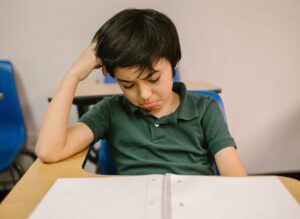By Professor Tony Attwood and Dr Michelle Garnett
Autistic adolescents can make excellent friends due to the exceptional personality qualities associated with being autistic, such as loyalty, honesty, dependability, compassion, integrity, social justice, open-mindedness, and a good sense of humour. The difficulty is in understanding the friendship expectations of their non-autistic adolescent peers.
Autistic adolescents tend to have more straightforward definitions of a ‘friend’ and less often refer to self-disclosure, empathic understanding and affection as defining characteristics of friendship (Cresswell et al., 2019; Platos & Pisula, 2021). A friend is more likely to be described as someone with a similar interest and talking about the same things (Kuo et al., 2013). We have found that autistic adolescents often continue to enjoy the same interests they had in their early primary school years, such as Lego, Thomas the Tank Engine and My Little Ponies, which are now despised by their peers or associated with more mature years such as an interest in opera. However, an autistic adolescent may find another autistic adolescent who shares the same interest, and a genuine friendship may result.
An autistic teenager may have difficulty knowing how to approach peers and not trust them from previous social experiences and have an inner conflict in wanting to become ‘cool’ and accepted by camouflaging and suppressing their autistic characteristics or staying true to themselves (Cresswell et al., 2019). Even when autistic adolescents are included in the activities and conversations of their peers at school, there may be an awareness that they are not popular. This is illustrated by two comments from autistic adults describing their teenage years: ‘I wasn’t rejected, but I did not feel completely included’, and ‘I was supported and tolerated, but not liked.’ A common lament is the feeling that others do not want to be around them – that they are perceived as a nuisance. Autistic adolescents often blame themselves, or the fact that they are autistic, for their peer rejection and become anxious to avoid inadvertently violating their peer social hierarchy and expectations. A lack of genuine social acceptance by peers will adversely affect self-esteem, self-identity, and perception of autism.
Loneliness and Connection
A pattern of repeated rejection and victimisation contributes to the development of loneliness, but interestingly, autistic students report more loneliness when engaged with social groups than when alone (Dean et al., 2023). The same study found that autistic adolescent girls find being alone without camouflaging less lonely than hiding aspects of their autistic identity to be accepted and included by peers. Autistic adolescents often yearn for a sense of connection and engagement with peers. However, when socially engaged, they are more acutely aware of their lack of genuine connection and feel more isolated and lonelier.
Our extensive clinical experience indicates that an autistic adolescent may connect with and be accepted by marginalised teenage groups that engage in activities and interests that tend to cause concern for parents – exploring alcohol and drug use, sexuality and eating disorders, for example. The friendship family ‘adopts’ the autistic teenager, who acquires a new intense interest and may accumulate knowledge from the Internet that the group values.
Coping with group dynamics
A study of adolescent autistic girls confirmed how exhausting socialising can be, especially in groups and coping with ‘too many opinions’ and feeling they needed to act as a peacemaker when conflict and disagreements occurred within a friendship group (Foggo & Webster, 2017). Adolescent autistic boys can have difficulty understanding and knowing how to respond to the joking behaviour of their male peers. They can misinterpret intentions and become confused and agitated (Sedgewick et al., 2018), increasing peer alienation. In a group situation, there can be anxiety for both adolescent autistic girls and boys due to being watched by multiple people at once (Cresswell et al., 2019). We have also recognised difficulty with linguistic processing when several people are talking at the same time. For autistic adolescents, two are company, and three a crowd.
Motivation, perception, and maintenance
An autistic adolescent may be motivated to make and maintain friendships but may not achieve social success, as illustrated in the following quotation from the parent of an autistic adolescent girl in a study by Cook et al. (2018).
It always goes spectacularly wrong…she likes the idea of it, so she’d love getting dressed up and going, and she’d love to see everyone for about 5 minutes, and then she’s got no idea what to do next. None of them knows how to make conversations, how to carry an evening, how to structure and plan it.”
Due to problems with Theory of Mind abilities, that is, perceiving and reading non-verbal communication and social context, it can be difficult to determine peers’ intentions, as described in another quote from the same study.
Leah tended to assume everyone is against her and doesn’t correctly perceive friendship situations.
Autistic adolescents can be increasingly aware of being socially naïve and making a social faux pas. The worry about social rejection and conspicuous errors can lead to social phobia and increased social withdrawal. An autistic teenager said, ‘I live in a constant state of performance anxiety over day-to-day social encounters.’ Aversive social experiences with peers can lead to the assumption that everyone is against them and to misperceiving or not recognising friendly intentions when they do occur. This may contribute to becoming a recluse at home and not wanting to leave the safe sanctuary of their bedroom.
When a friendship does occur, one of the difficulties for autistic adolescents is knowing how to maintain that friendship. They may struggle with unspoken rules, such as how often to make contact using social media; appropriate topics of reciprocal conversations on mutual interests and experiences; what might be suitable for empathic comments and gestures; and how they should be generous or tolerant about disagreements. Autistic teenagers can tend to be ‘black or white’ in their concept of friendship, such that when a friend makes a transgression of a friendship expectation or ‘rule’, the autistic teenager may coldly end the friendship rather than seek reconciliation. Sometimes, when the neurotypical friend ends the relationship, the autistic adolescent can experience considerable emotional distress, especially when not knowing exactly why the friendship ended; they may experience a deep sense of confusion and betrayal.
Where to from here?
We have created two consecutive half-day presentations exploring autism and friendship to be webcast on the 17th of July 2023. Both webcasts describe friendship issues and how to help, with the morning focussing on children from 3 – 12 years old and the afternoon focussing on adolescents. We designed the webcasts for parents, teachers, and professionals, including psychologists and speech pathologists who wish to support autistic children and teenagers to build connections with their peers.
Exploring Friendship in the Primary Years
Exploring Friendship in High School
References
Cook et al. (2018) European Journal of Special Needs Education
Cresswell, Hinch and Cage (2019) Research in ASD 61
Dean et al. (2023). Women’s Health 19
Foggo & Webster, 2017 Research in ASD 35
Kuo et al. (2013) Autism
Platos and Pisula, (2021) Research in ASD 81
Sedgewick, Hill and Pellicano 2018 Autism




